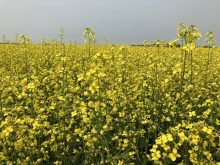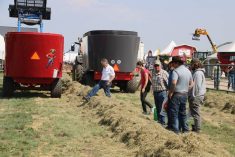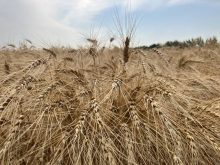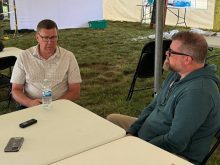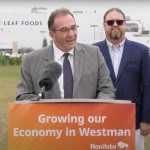Farmers should think about how to better manage their fixed costs to achieve a better bottom line result.
Costs, or expenses, associated with running a farm are often recorded as variable and fixed.
Variable expenses can be further categorized as being production and operating expenses.
The goal is to maximize profit or net income. This is achieved by increasing revenue, decreasing expenses or a combination of the two.
This leads to a question: Does it really matter how the expenses are recorded? After all, the bottom line results are what count.
Read Also

Supreme Court gives thumbs-up emoji case the thumbs down
Saskatchewan farmer wanted to appeal the court decision that a thumbs-up emoji served as a signature to a grain delivery contract.
Expenses, regardless of how they are recorded, are an investment in the business. As with any investment, it is expected that there will be a return.
The task is to determine how the investment (in this case, the expenses) can be managed so as to maximize the return or profit.
The adage that you can’t manage what you can’t measure is why it matters how expenses are recorded.
Production expenses such as fertilizer, chemical, seed and crop insurance and operating expenses, such as fuel, repairs, custom work and wages, vary with production.
Fixed costs are referred to as business expenses that do not directly fluctuate with increases or decreases in production. They are often re-ferred to as overhead.
Typical examples include interest, amortization (or depreciation), utilities, professional fees, management salaries, rent and property taxes. They are fixed in the sense that you have to make interest payments or pay rent and property taxes even if you have no production.
Not that long ago, I travelled to England and visited farm management consultants. Crop production in certain areas there is intensive. One consultant said that some farmers think of their fixed costs as being more variable than their variable costs.
That might seem confusing, but the rationale was that because of the need to drive yield, farmers had limited ability to adjust fertilizers and chemicals. They believed they had more control in managing their fixed costs and therefore improve their net incomes.
Production in Canada has different considerations than England, albeit with the same need to optimize yield. The thinking around managing fixed costs does have applications here though.
Amortization, or depreciation, is a real cost. It is a non-cash cost. It is supposed to represent the cost of the annual wear and tear on buildings and equipment.
There are two ways to manage this cost. Farmers and accountants often use tax (capital cost allowance) rates, which can be 10 to 30 percent, depending on the asset.
An option is to use a lower amortization rate for management purposes, which more closely represents the annual cost of ownership and thus results in a more realistic net income.
The other option is to either not own or share in the ownership of operating assets. This obviously reduces the fixed amortization cost.
Interest expenses can be managed by either not borrowing as much money, or selecting variable or fixed rates.
Management salaries can also be adjusted. If the objective is to increase net income, taking less from the business in management salaries is an option, although there can be tax strategy implications.
These ideas look at how fixed costs could be reduced as tactics to increase net income.
Another option is to keep fixed costs at their current values and increase the productive asset base. This spreads the existing fixed costs over more productive units, lowering the amount per unit and thus increasing net income.
The challenge here is to increase the productive base without increasing, or at the least only minimally increasing fixed costs.
The most important message here is to encourage farmers to think about how their fixed costs can be better managed so as to achieve a better bottom line result. In all likelihood, some combination of the above may be required.





